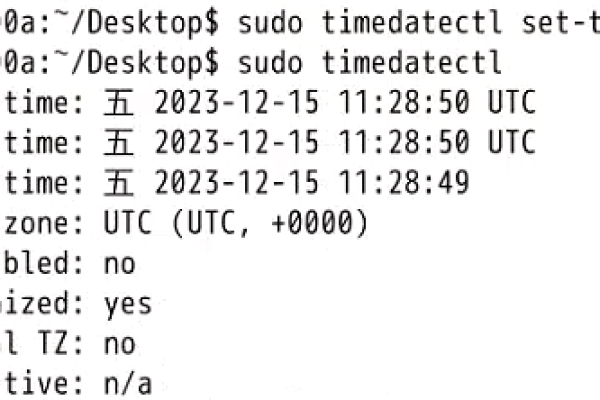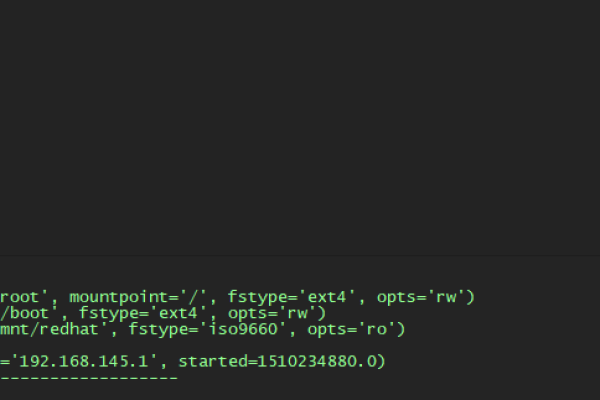如何在C语言中获取和设置Linux程序的当前运行目录?
- 行业动态
- 2025-01-22
- 1
pwd 命令来显示当前工作目录。,,“ bash,$ pwd,/home/user,“
在 Linux 系统中,获取当前运行目录是一个常见需求,无论是在编写脚本、程序还是进行系统管理时,下面将详细介绍如何在 C 语言中获取当前工作目录,包括相关的函数和示例代码,并对一些常见问题进行解答。
获取当前工作目录的方法
1、使用getcwd 函数
函数原型:char *getcwd(char *buf, size_t size);
功能说明:该函数会将当前的工作目录绝对路径复制到参数buf 所指的内存空间,参数size 为buf 的空间大小,如果工作目录绝对路径的字符串长度超过参数size 大小,则返回NULL,并将errno 的值设置为ERANGE,如果参数buf 为NULL,getcwd 会依参数size 的大小自动配置内存(使用malloc),若参数size 也为 0,则getcwd 会依工作目录绝对路径的字符串程度来决定所配置的内存大小,进程可以在使用完此字符串后利用free 来释放此空间。
示例代码:
#include <stdio.h>
#include <unistd.h>
int main() {
char buf[80];
if (getcwd(buf, sizeof(buf)) {
printf("Current working directory: %s
", buf);
} else {
perror("getcwd");
}
return 0;
} 2、使用get_current_dir_name 和getwd 函数
get_current_dir_name 函数:
函数原型:char *get_current_dir_name(void);
功能说明:获取当前工作目录的名字,返回一个指向表示当前工作目录名字的字符串的指针,这个字符串是通过调用malloc 分配的,所以应该使用free 来释放它。
getwd 函数:
函数原型:char *getwd(char *buf);
功能说明:类似于getcwd,但不需要指定缓冲区大小,它会将当前工作目录的绝对路径存储到由buf 指向的缓冲区中,并返回该缓冲区的指针,如果执行失败,返回NULL。
示例代码:
#include <stdio.h>
#include <unistd.h>
#include <string.h>
int main(void) {
char buffer[1024];
char *p = getcwd(buffer, 40);
char *dir = (char *)get_current_dir_name();
char *twd = getwd(buffer);
printf("buffer:%s p:%s size:%d
", buffer, p, strlen(buffer));
printf("dir:%s
", dir);
printf("twd:%s
", twd);
free(dir);
return 0;
} 3、使用/proc 文件系统
方法描述:每个正在运行的进程在/proc 文件系统下都有一个对应的目录,该目录包含了关于该进程的各种信息,包括当前工作目录,可以通过读取进程目录下的cwd 符号链接来获取当前工作目录。
示例代码:
#include <stdio.h>
#include <stdlib.h>
#include <unistd.h>
#include <string.h>
int main() {
pid_t pid = getpid();
char path[256];
sprintf(path, "/proc/%d/cwd", pid);
char *cwd;
ssize_t len = readlink(path, NULL, 0);
if (len == -1) {
perror("readlink");
exit(EXIT_FAILURE);
}
cwd = malloc(len + 1);
if (cwd == NULL) {
perror("malloc");
exit(EXIT_FAILURE);
}
if (readlink(path, cwd, len + 1) == -1) {
perror("readlink");
free(cwd);
exit(EXIT_FAILURE);
}
printf("Current working directory: %s
", cwd);
free(cwd);
return 0;
} FAQs
1、为什么getcwd 函数需要指定缓冲区大小?
getcwd 函数需要指定缓冲区大小是因为要确保提供的缓冲区能够容纳当前工作目录的绝对路径字符串,如果缓冲区大小不足,函数将返回NULL 并设置errno 为ERANGE,通过指定足够大的缓冲区,可以确保函数成功执行并获得正确的结果。
2、get_current_dir_name 和getwd 函数与getcwd 函数有什么区别?
get_current_dir_name 函数返回当前工作目录的名字,而getwd 函数返回当前工作目录的绝对路径。getcwd 函数也需要指定缓冲区大小,而getwd 函数不需要,但它的行为与getcwd 类似,只是不需要手动指定缓冲区大小。
3、如何使用/proc 文件系统获取当前工作目录?
通过读取/proc 文件系统中当前进程目录下的cwd 符号链接,可以获取当前工作目录,首先需要确定当前进程的 PID,然后构建/proc/[PID]/cwd 路径,最后使用readlink 函数读取该符号链接的内容,即为当前工作目录。
在 Linux 系统的 C 语言编程中,有多种方法可以获取当前运行目录,每种方法都有其特点和适用场景,开发者可以根据具体需求选择合适的方法来实现这一功能。
本站发布或转载的文章及图片均来自网络,其原创性以及文中表达的观点和判断不代表本站,有问题联系侵删!
本文链接:https://www.xixizhuji.com/fuzhu/126929.html



